There are several categories of coir fibre depending on the extraction process, namely 1-tie, Oamtt and mattress fibre. The fibre strands have a very high lignin content surrounding the cell walls which give it high resistance in withstanding tension. Coir fibre is 100% natural and eco friendly and used in many industries such as Agriculture, Horticulture, Packaging, Bedding, Flooring and Insulation.
Properties of various types of fibre as an average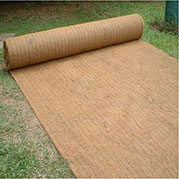
Coir Erosion control blanket is made by sandwiching a uniform coir fibre layer with two PP layers or with two jute layers. Both PP and jute layers are photodegradable and biodegradable. The fibre layer is needled and two PP / Jute layers are stitched from either sides with PP or jute thread to hold in one unit
The blanket is available in different weights (300gsm-1200gms) and applied to the ground considering the soil condition, strength of the rain/snow/wind, slope of the land. Blanket is commonly used in steep slopes where the erosion is much higher.
Coir blanket is capable of dealing with rain erosion, wind erosion and water erosion. The settled blanket on the ground pave the way for vegetation in the tough conditions,
The blanket is available in 2.4m and 50m.
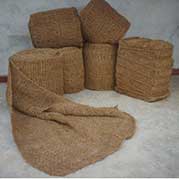
The geotextile net is made out of coir twine or yarn. The ground is covered with the geotextile netting to control the rain, wind and water erosion.
There are three major categories such as 400gsm, 700gsm and 900gsm. The eye is larger in 400gsm and smaller in 900gsm. 400gsm netting is used in less steep slopes and 900gsm used in high slopes.
The geo textile is generally available in 2mx50m netting, with mechanical roll-up

Coir log (water log, coco log) is made with a coir netted bag filled with coir fibre. Coir netted bag could be either a diamond netting or geotextile netting. In general, the diameter is 30cm and 3m or 4m long.
The weight is about 10kg/m.
The coir log is placed in river banks to prevent the river bank erosion from the wave created in the river. The pre-vegetated logs are also available. By selecting the correct vegetation, water can be cleared instead of using chemicals.
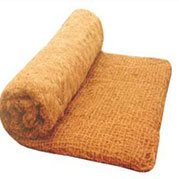
Coir pillow is made with a thicker layer of coir fibre filled into a coir bag with sizes of 1mx1m or 1mx10m.
Coir bag is typically made our of geo textile. The packing is in loosely pressed bundles or in rolls.
Used in muddy soil to absorb water and to facilitate vegetation.
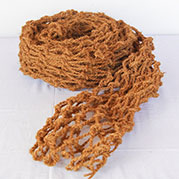
The empty coir net is produced with coir twine. The standard diameters are 30cm, 40cm, 50cm and 60cm. The net is rolled up with 50m length in the case of 30cm diameter netting.
Buyer will use coir fibre or suitable material as the filler into to the log according to the final application of the product
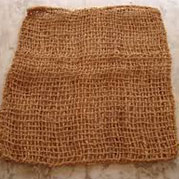
Coir soil bags is made with coir geotextile netting. The soil bag has couple of pockets. Number of pockets could be one, two, four or max six. The ideal size would ne 1mx1m with 1m x 0.5m. Extra geotextile piece is there to fix the bag to the ground.
The pockets of the soil bag are filled with soil or any other growing media. Then suitable plants are planted in these pockets and fix in slopes for vegetation.
The soil bag is ideal vegetation in the heavy slopes, hard soil or even on rocks.
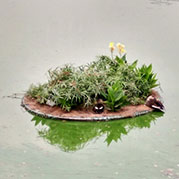
Floating island is typically a coir pillow which is made with coir geotextile netting bag filled with coir fibre, the difference is between the floating island and the pillow is that, floating island is designed to float. Floating devises are fixed to the pillow. The floating islands are mostly available in square, round and oval shapes.
The special hydro plants are planted in the floating island. While the vegetation is there on top, the special root system which is unusually long will purify the water.
| Water soluble | 5.25% |
| Pectin & related compounds | 3.30% |
| Hemi-Cellulose | 0.25% |
| Cellulose | 43.44% |
| Lignin | 45.84 |
| Length in inches | 6-8 |
| Density (g/cc) | 1.40 |
| Tenacity (g/Tex) | 10.00 |
| Breaking elongation% | 30% |
| Diameter in mm | 0.10 – 1.50 |
| Rigidity of Modulus | 1.8924 dyne/cm2 |
| Swelling in water (diameter) | 5% |
| Moisture at 65% RH | 10.5% |